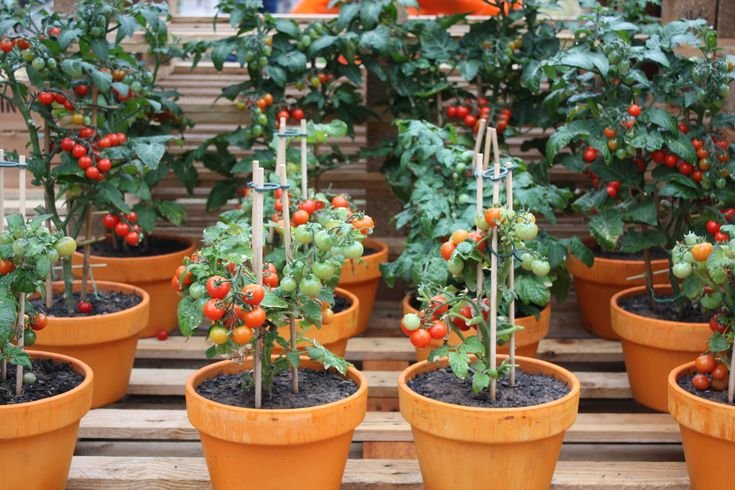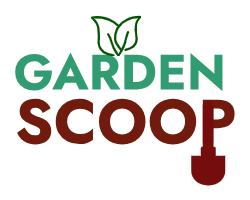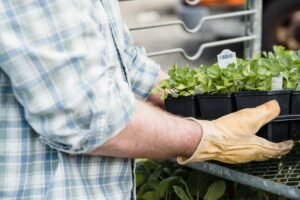Gardening Tips for Growing Tomatoes at Home

Tomato plants are preferred by most home gardeners owing to their use and the way they grow. Regardless of your level of experience in gardening, gardening, or tomato growing as a hobby, the process can, at the same time, be fun and fruitful. Below are some tips that will guide you in nurturing and developing a healthy and productive tomato plant in the comfort of your home.
1. Selection of Appropriate Varietals
When it comes to growing tomatoes, a few important factors must be considered, starting with the type of seeds to be planted. Some of the common tomatoes that are available include cherry tomatoes, Roma tomatoes, and beefsteak tomatoes. Cherry tomatoes are small and sweet. They are good for salads and if one just wants to bite something sweet to snack. Roma tomatoes are dense fruit with little water content; hence, they can be used for making sauces or preservation. Beefsteak tomatoes are big and succulent and widely used for slicing. This is important to consider when choosing a particular type of banana since banana varieties have different weather and space requirements. In case of restricted space, it is advisable to use determinate varieties that do not grow too large. However, indeterminate varieties keep growing and bearing fruits throughout the season, which is ideal for people with larger spaces.
2. Preparing the Soil
Tomatoes have well-drained soil conditions that provide plenty of nutrients. Before planting, one should make sure the soil is slightly acidic. That is, the PH should range between 6. 0 and 6. 8. An easy method of determining your soil’s quality is using a soil test kit. Enrich the soil with compost or organic matter to enhance its nutrient content if needed. Adding manure or a slow-release fertilizer will help promote root increases at a higher level. Proper drainage is also very important so that the soil is not waterlogged, which will cause the rotting of roots and other related complications. If the soil is compacted, it has to be loosened to allow the plant roots to spread and grow to their optimum.
3. Transplanting Your Tomato Seeds or Seedlings
Having prepared the soil type, the right time to plant your tomatoes starts. If developing from seed, it is recommended that they be sown indoors 6-8 weeks before the last frost is expected. They should be planted in the garden after the last frosts, especially if they are seedlings that have started to grow indoors. When planting, perform it with spaces of about 18 to 24 inches so that ventilation is good, but it may hinder disease growth. Tomatoes botanically are the stem and, therefore, need to be planted deeper into the soil than most plants up to the second set of leaves. This helps encourage the development of well-rooted trees. Another thing that you need to do is stake or cage your plants, which is critical to ensure that they are supported properly. During the growth of tomato plants, they become pole-like, and the support will ensure that the fruits do not lay on the ground, which may lead to disease or rot.
4. Watering Your Tomato Plants
Tomatoes also require proper irrigation to support proper growth and yield production among the plants. They have to be watered frequently but should not be watered frequently because they are sensitive to water. Water, but avoid applying water on the leaves of the plants; instead, pour water on the ground around the plants. This helps develop deep-rooted systems and discourages fungus diseases due to wet leaves. Water the plants in the morning to provide enough water to the plants during the day, especially when the day is hot. Another way of maintaining moisture is mulching at the base of the plants, which helps control the soil temperature and water frequency.
5. Fertilizing for Optimal Growth
Tomatoes are known to be heavy feeders; hence, they need many nutrients to grow and produce fruits. It is recommended that during planting, it is advisable to add an equator fertilizer and preferably a fertilizer comprising nitrogen, phosphorus, and potassium in an equal ratio. When the plants start to flower, use a fertilizer with a higher phosphorus and potassium content, as this will help produce fruits. Nevertheless, extreme care should be taken with nitrogen-based fertilizers because excessive nitrogen contributes to faster growth of foliage at the expense of the fruit. Feeding your plants every week for about three weeks will assist in making your plants powerful producers.
6. Pruning and Managing Growth
Trimming tomato plants is among the most basic techniques that can be applied to enhance the production of fruits. This way, you eliminate the diseased lower leaves that are always in contact with the ground, increasing air circulation. Furthermore, the removal of small and tender branch lets growing between the trunk and branches, known as the suckers, allows the plant to concentrate on fruit development than on the growth of branches. As far as pruning is concerned, for the indeterminate varieties, one may switch the top of the plant once it reaches a particular height. This facilitates and minimizes continuous vertical growth, which is inevitable for the plant, and instead focuses more on fruit-bearing.
7. Dealing with Pests and Diseases
Tomato plants are also prone to different pest attacks and diseases, so the challenge would be to be vigilant. Some of the pests are aphids, whiteflies, and tomato hornworms, and diseases such as blight and blossom-end rot are some of the diseases affecting the plants. This is important in avoiding a conglomerate of diseases within the soil; therefore, it is important to rotate your crops throughout the year to avoid destroying your plants. Constantly monitor your plants for pest and disease infestations in the form of holes in the leaves or changes in color. Natural remedies, which include neem oil or insecticidal soap, may be used to control pests that affect plants. If you suspect that your plants have fungal diseases, for instance, blight, just prune the infected leaves and space your plants to allow for proper air circulation.
Conclusion
Tomato farming is a very enjoyable task that can constantly supply fresh edible fruits during the planting season. Tomato diseases are rare and uncomplicated, but it is important to know how to select proper varieties, prepare the soil and water, and feed the tomato plants correctly to enhance their production. When properly tended by giving these structures a supra persona attention, the plants will, in turn, reward you with vegetables good enough for the harvest.
“To read more about the importance of a home garden, click here.”



